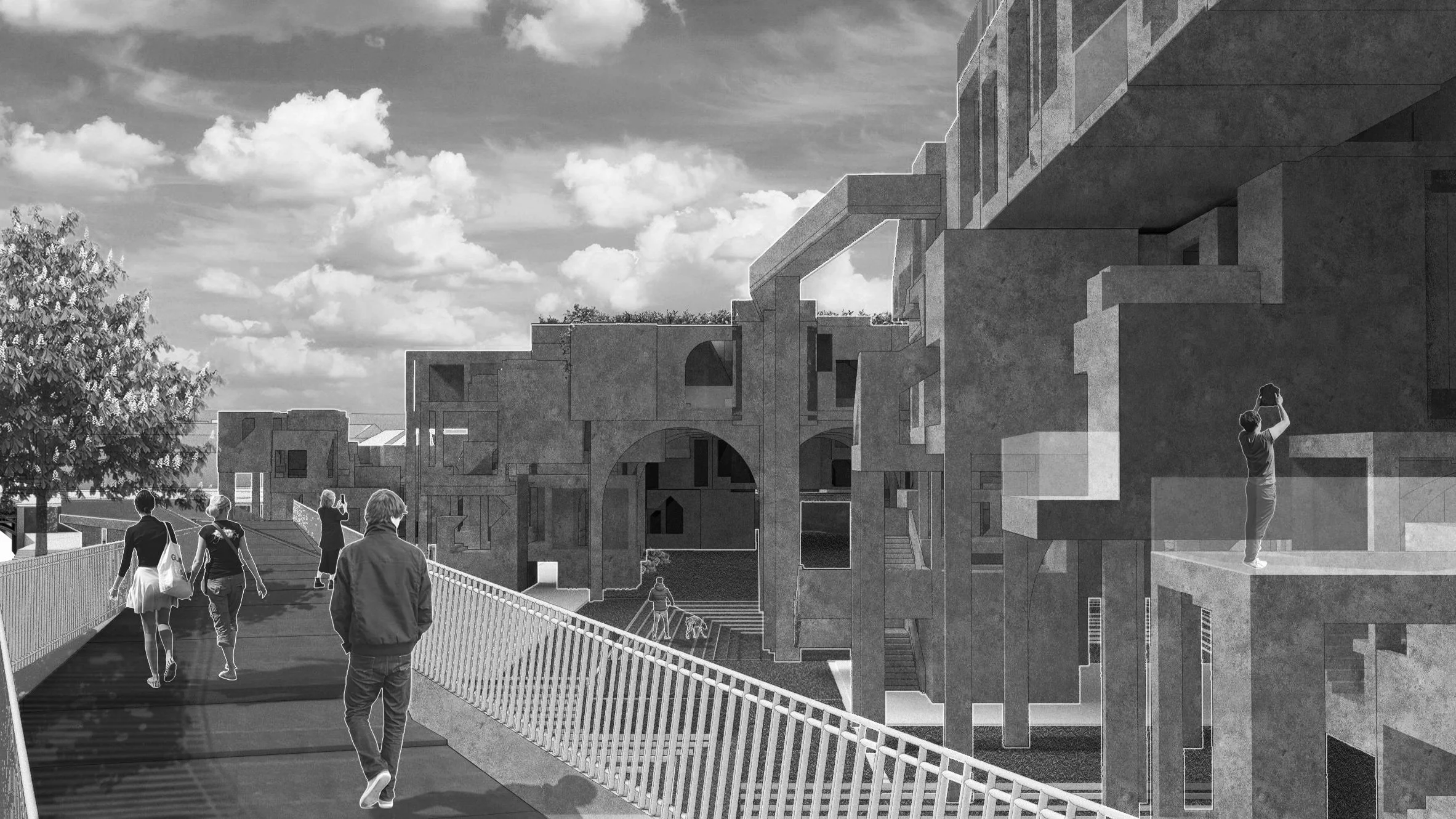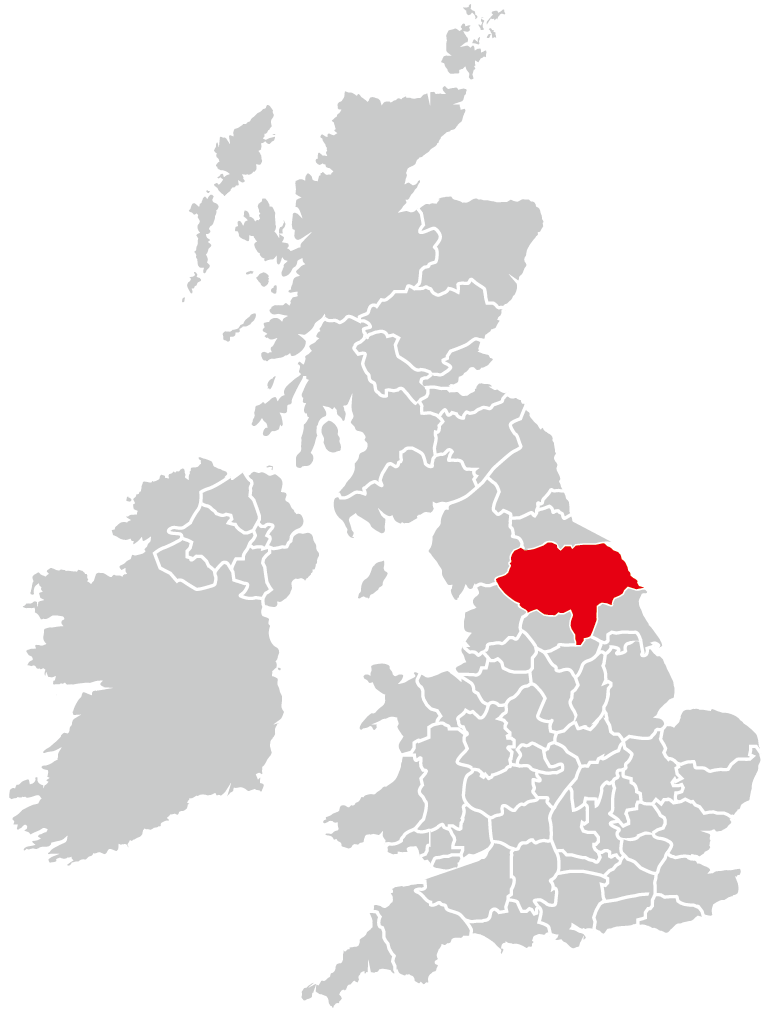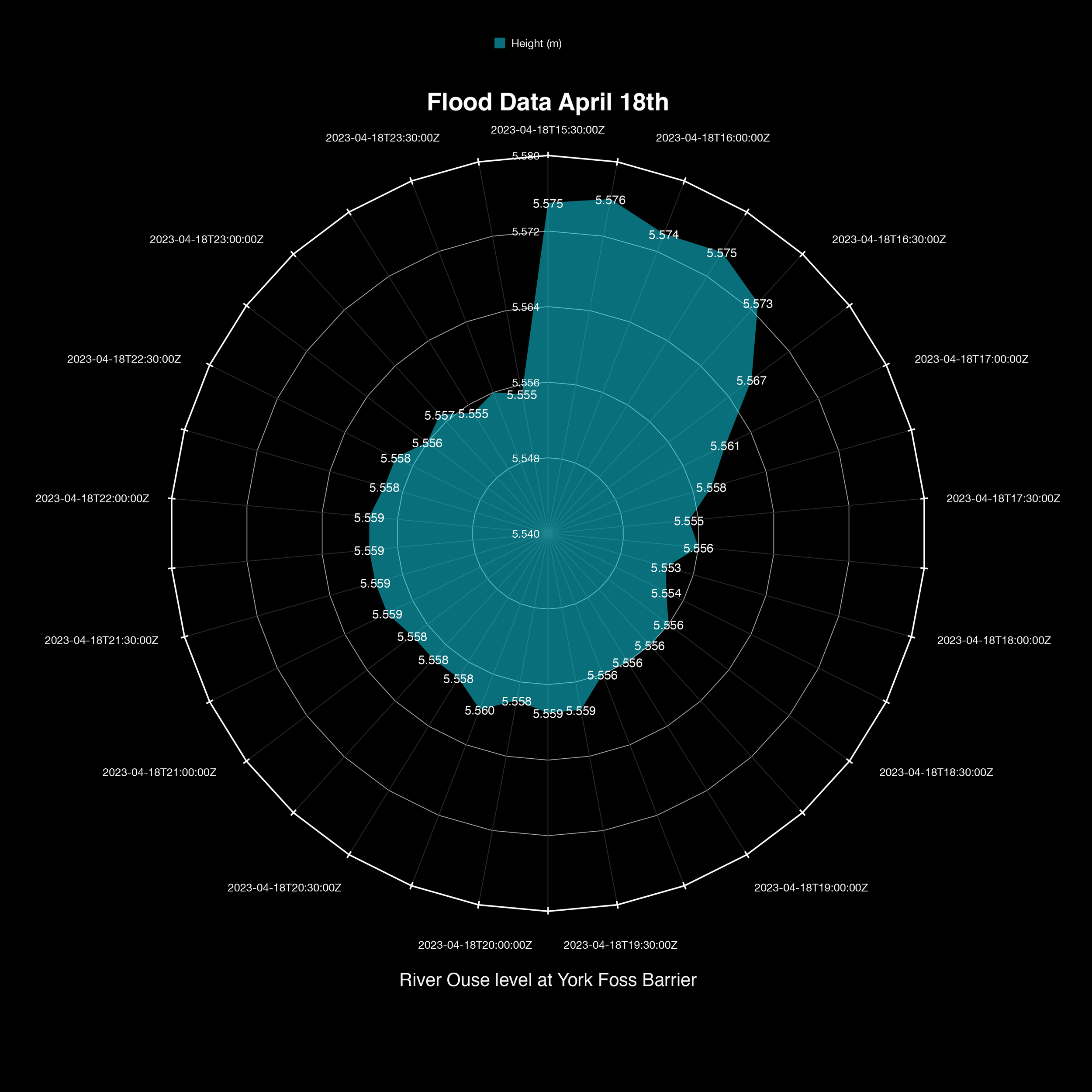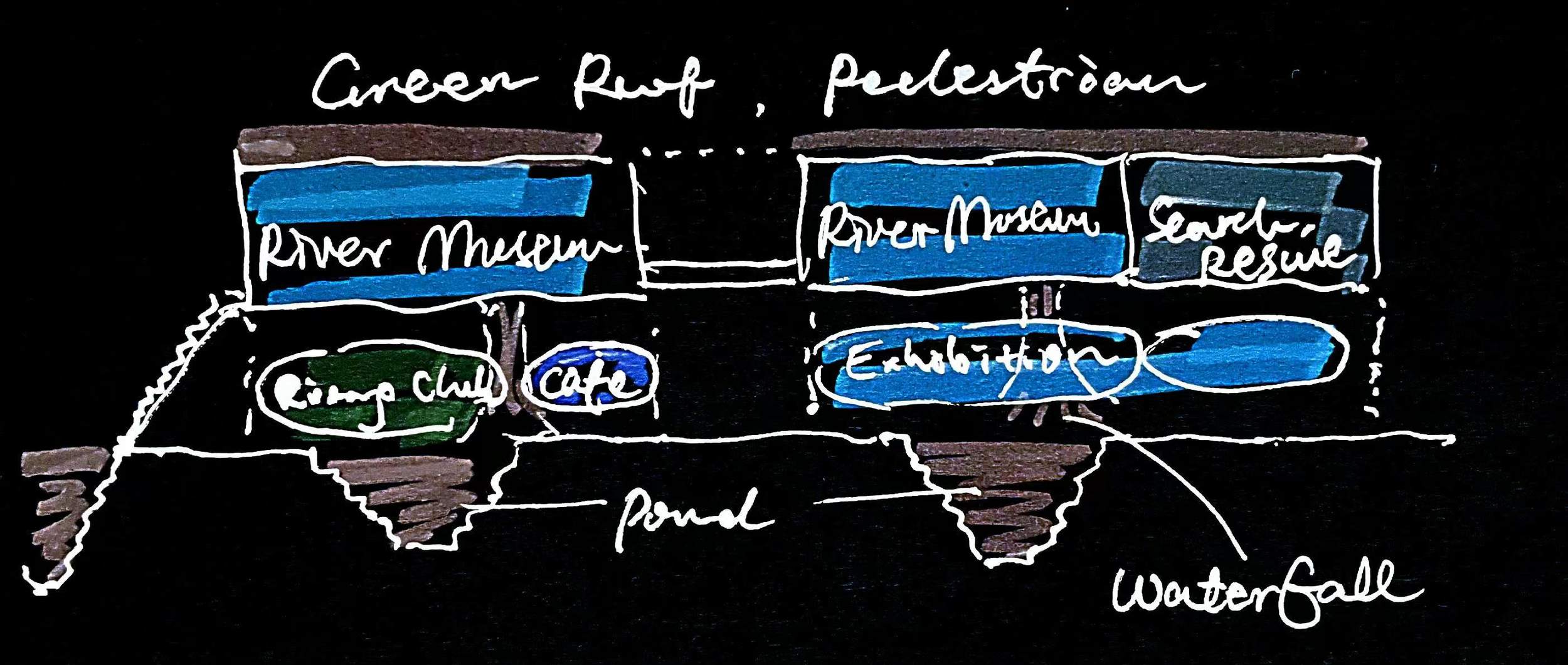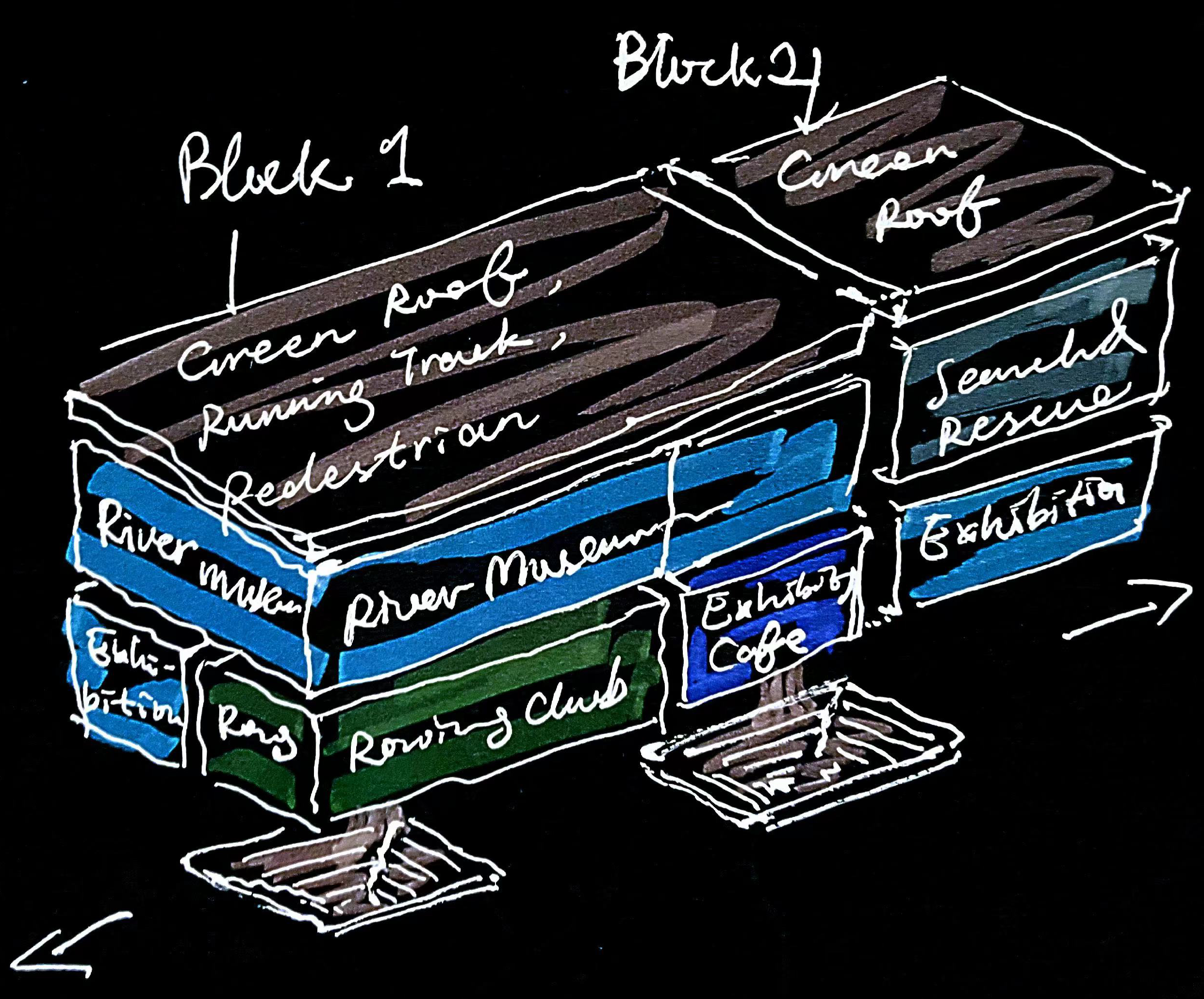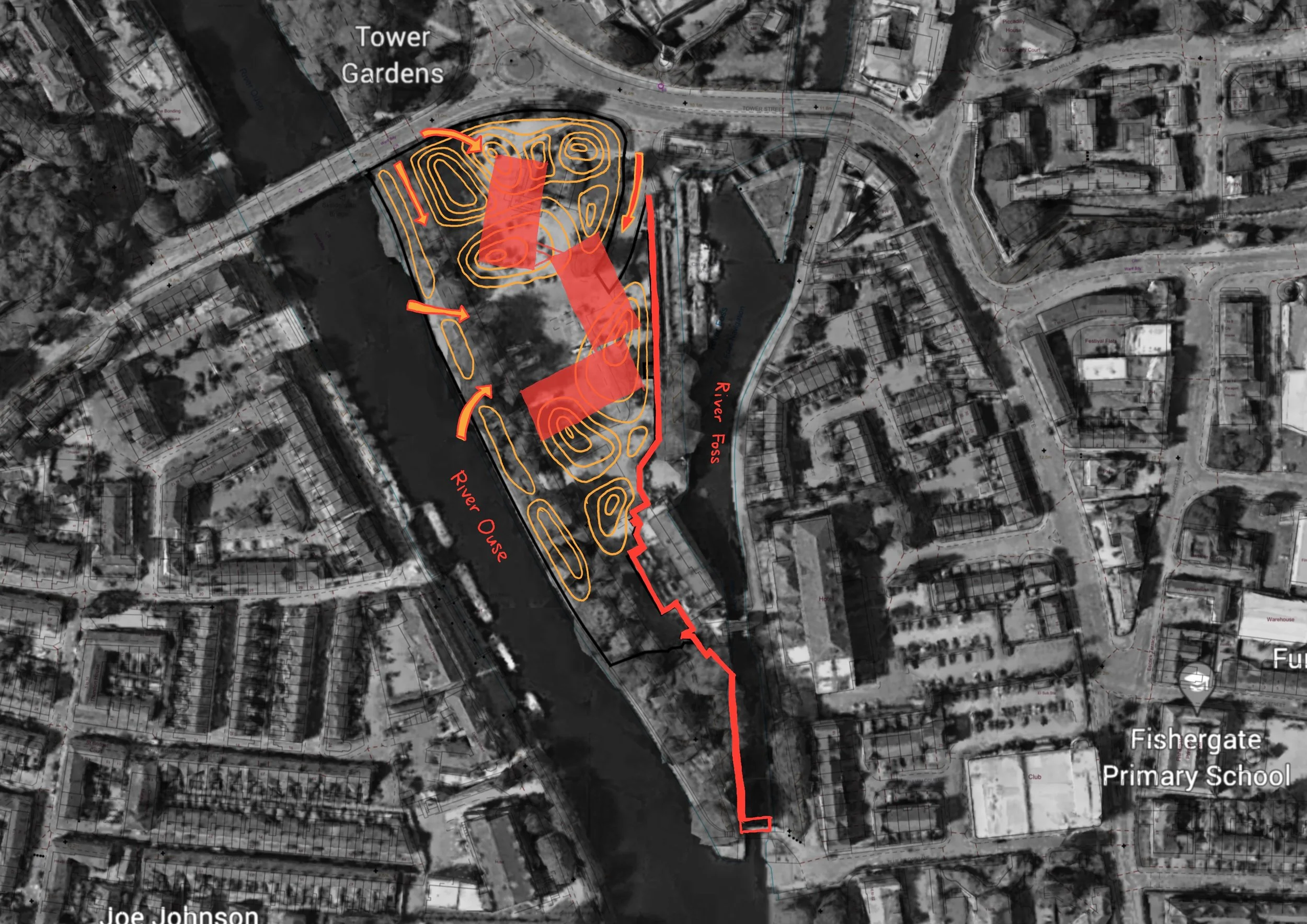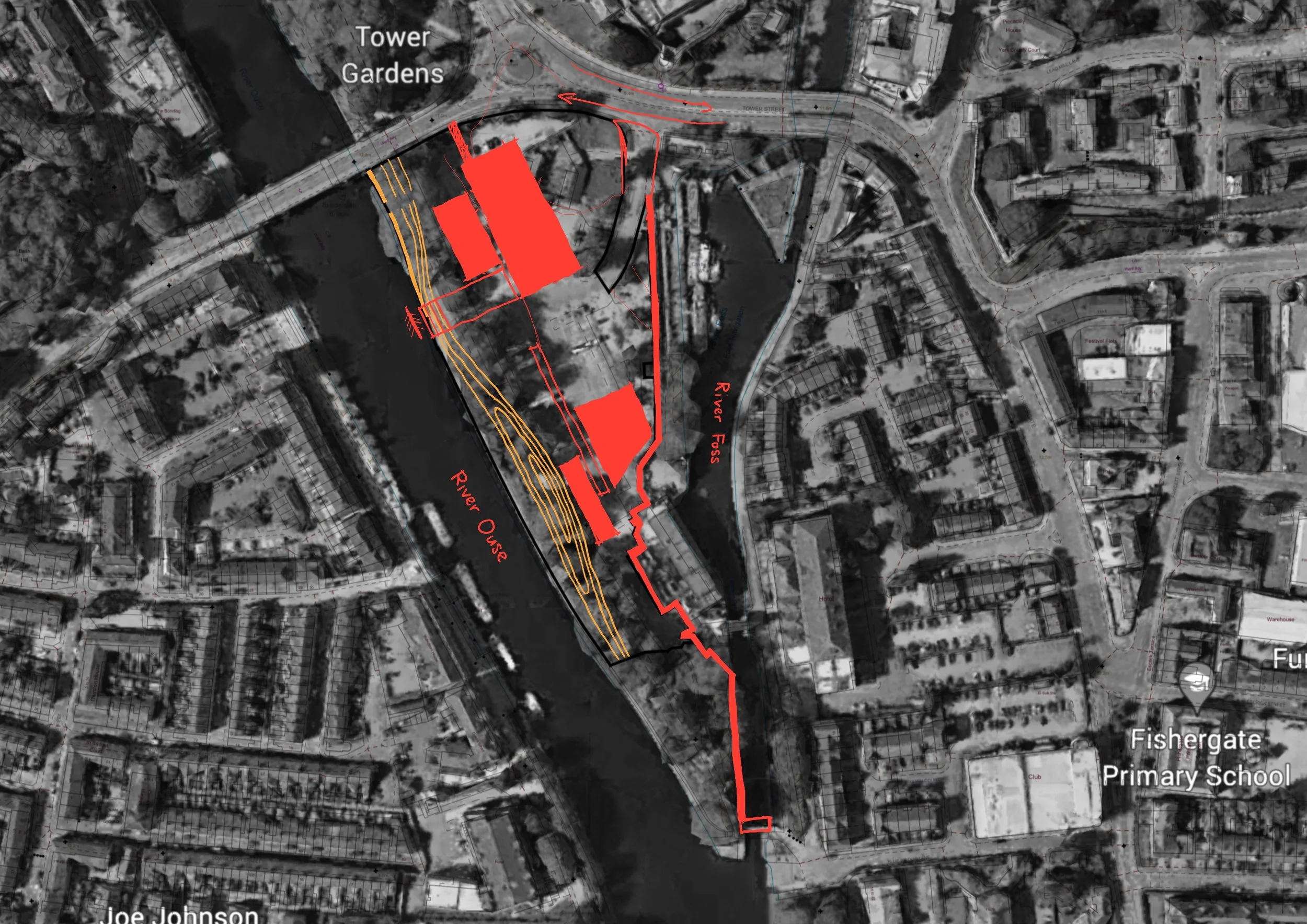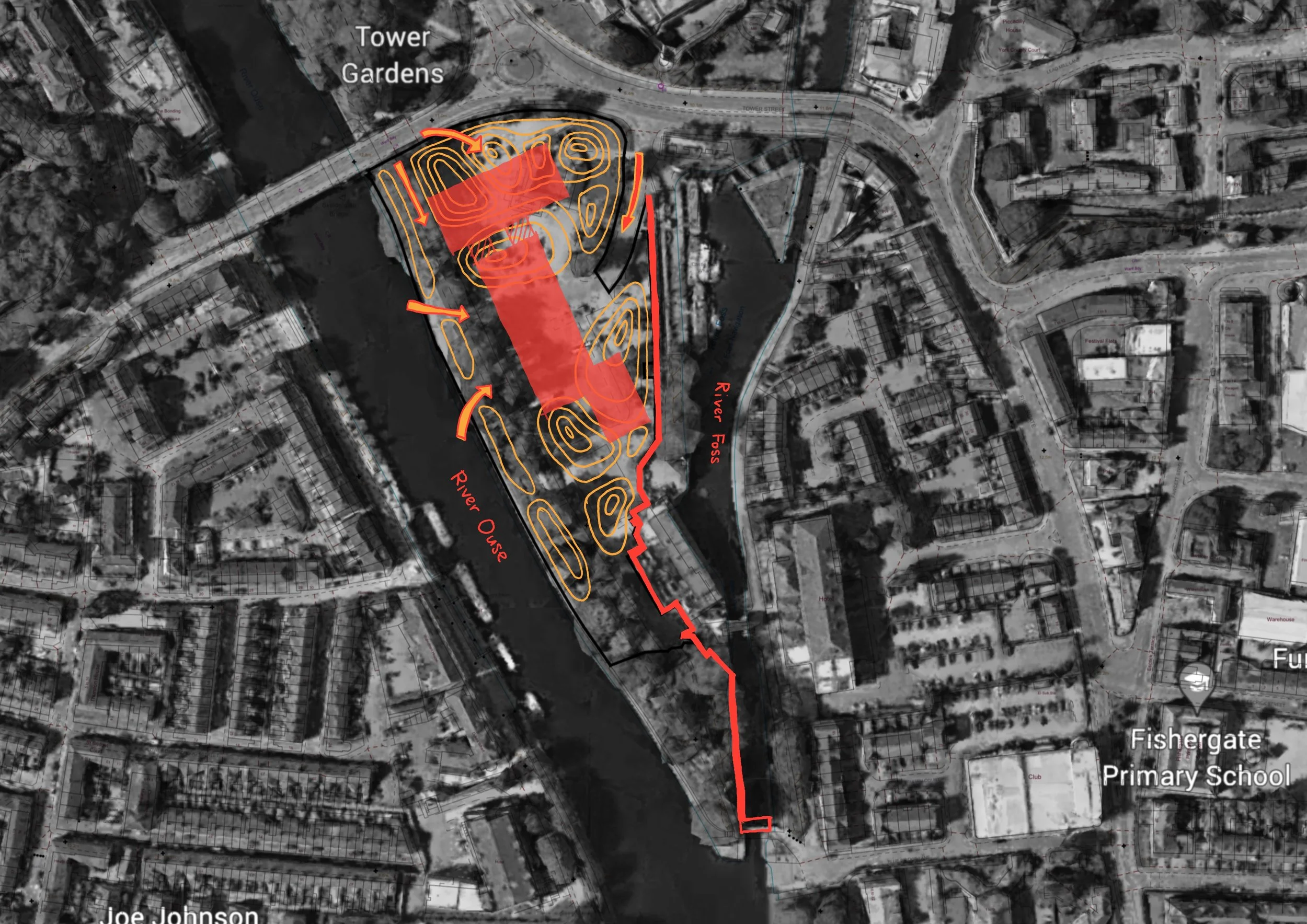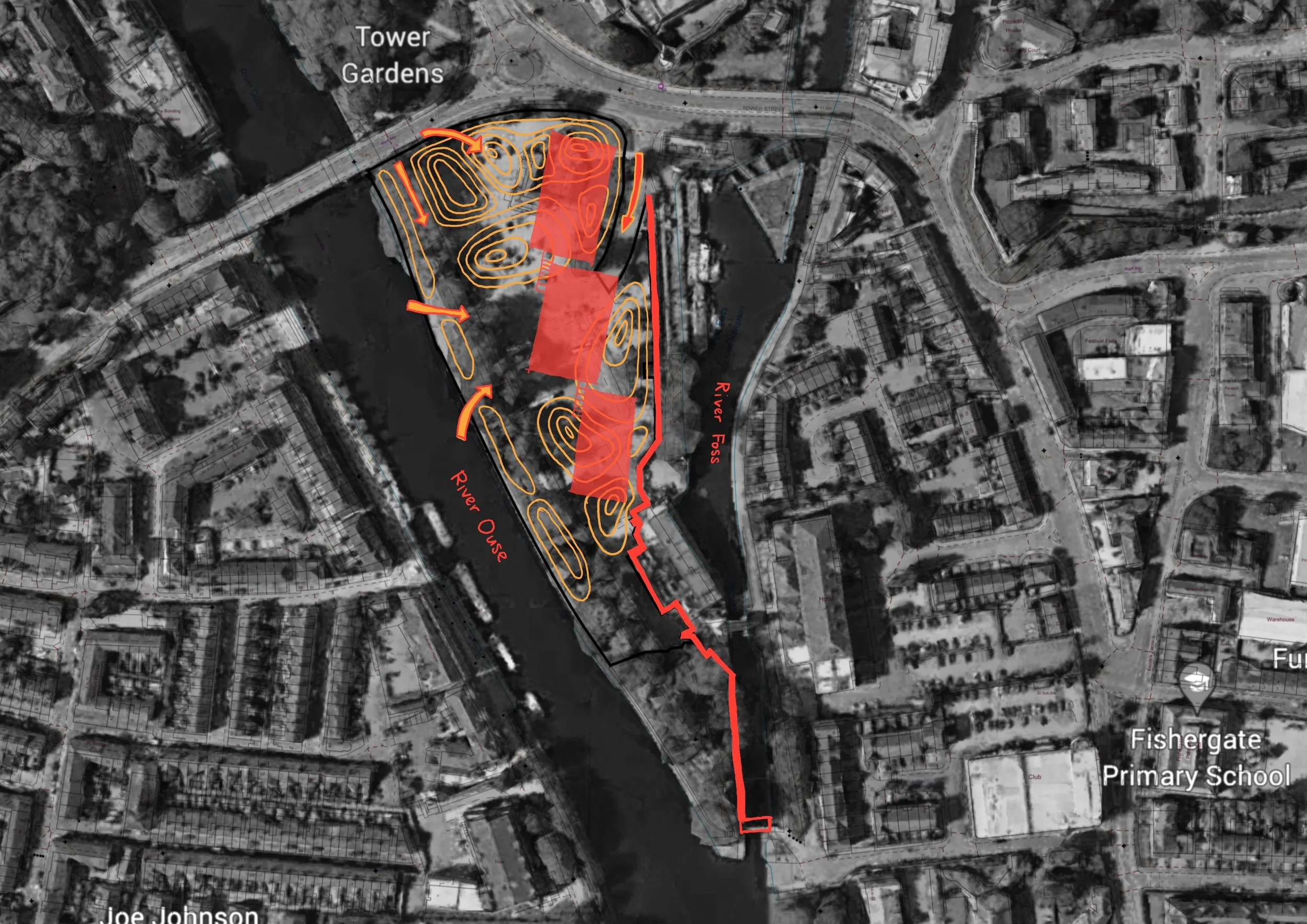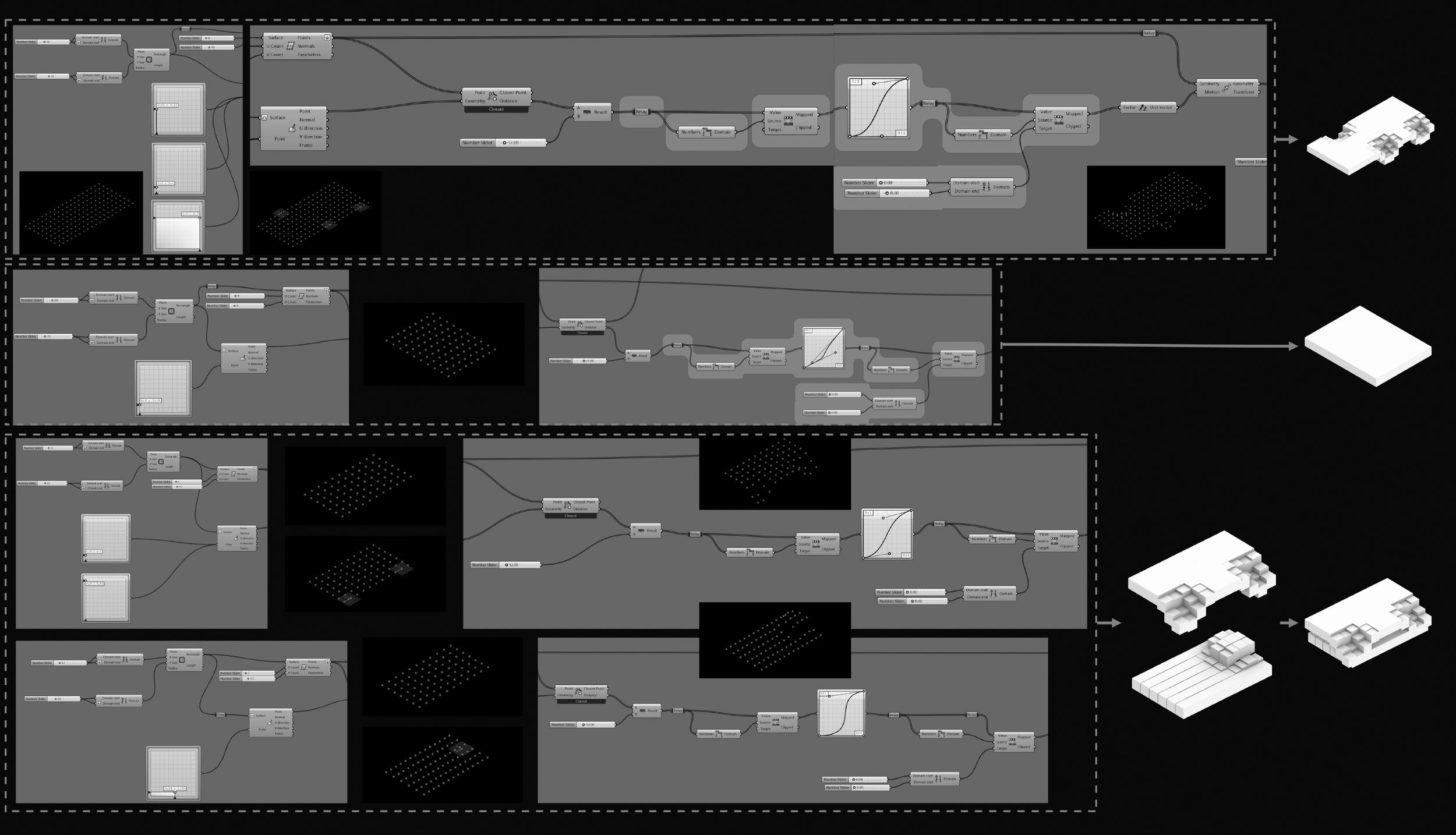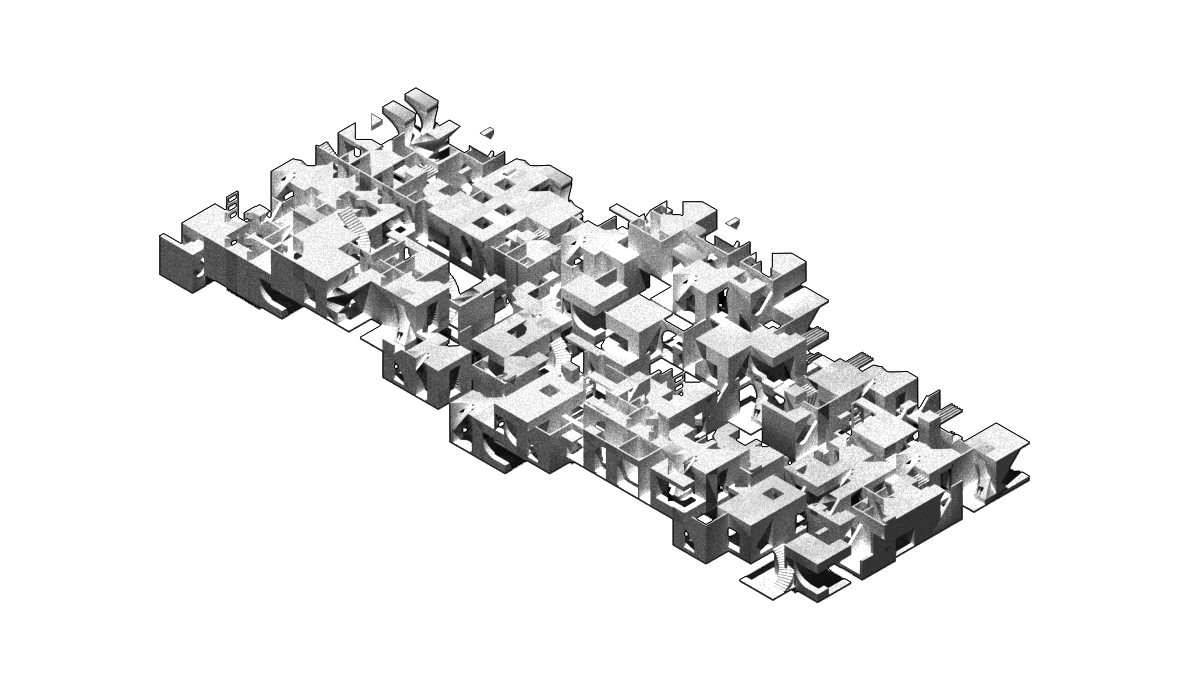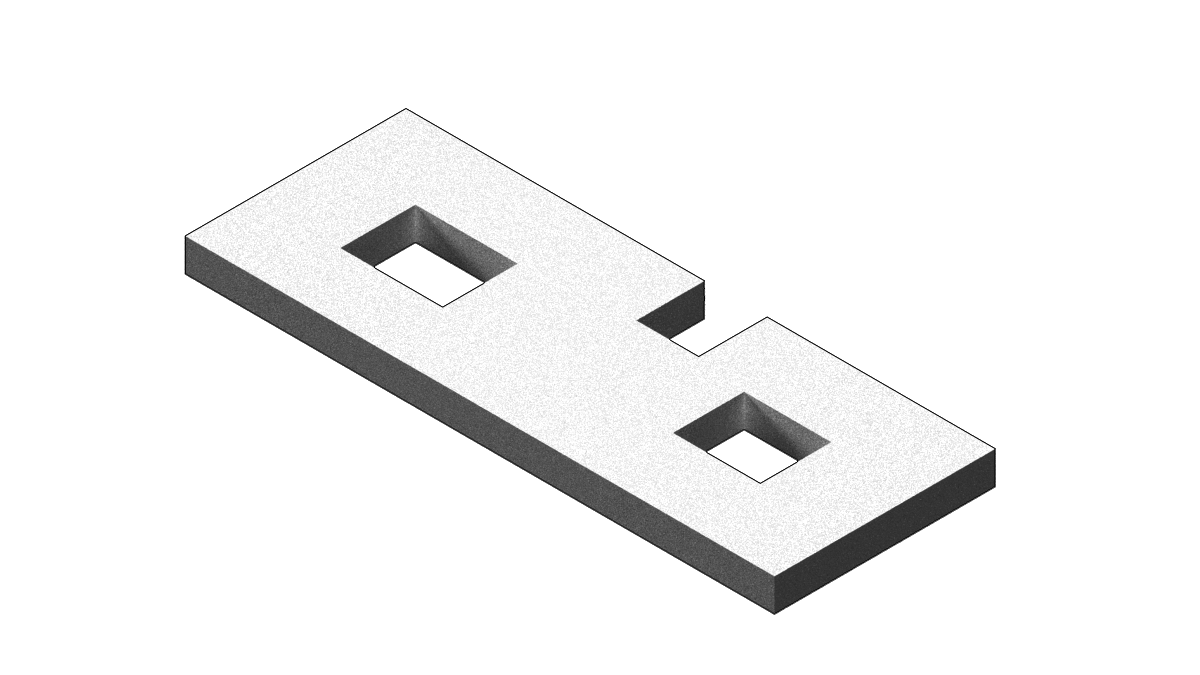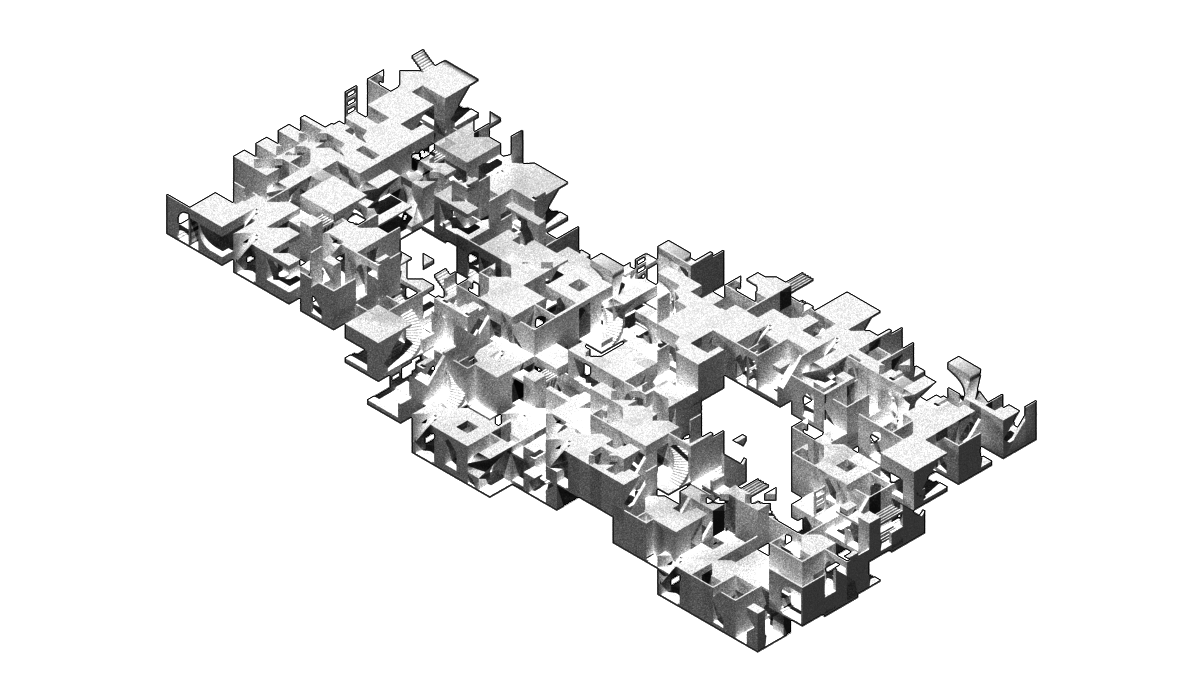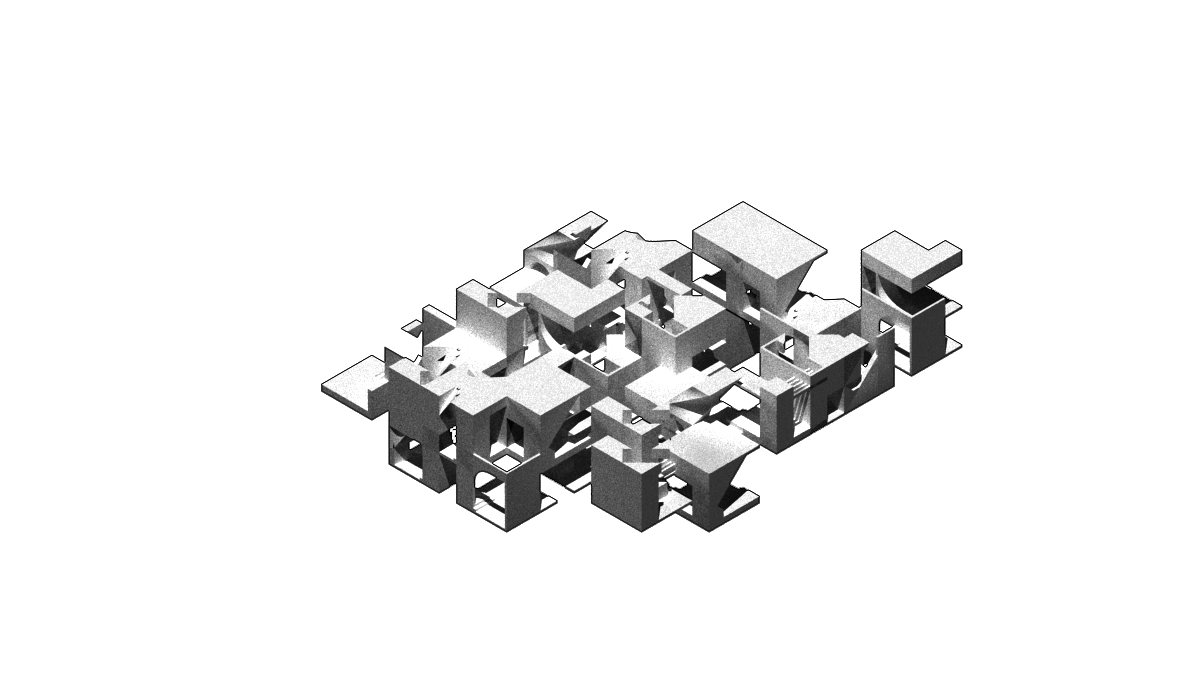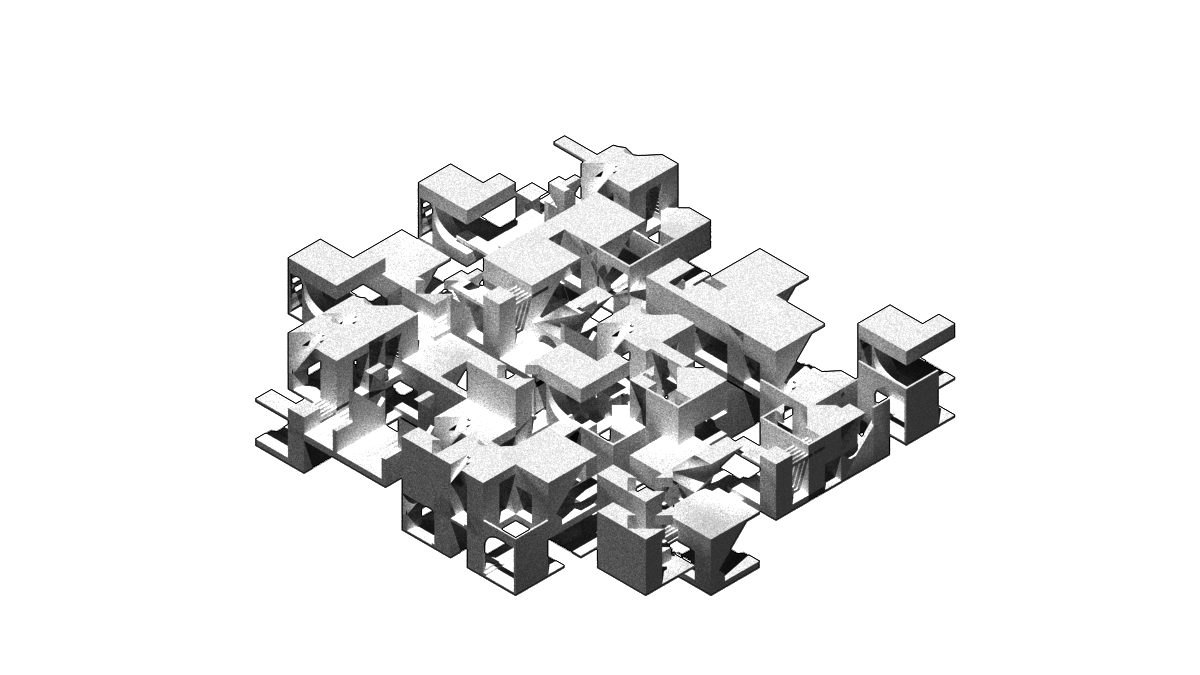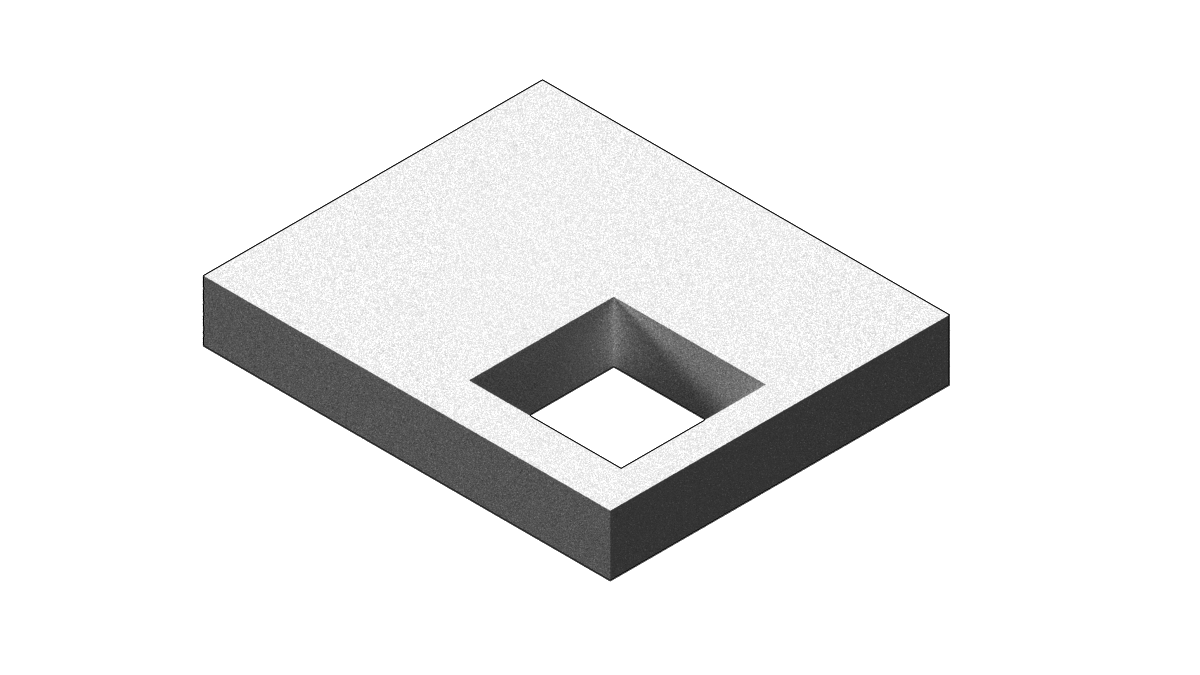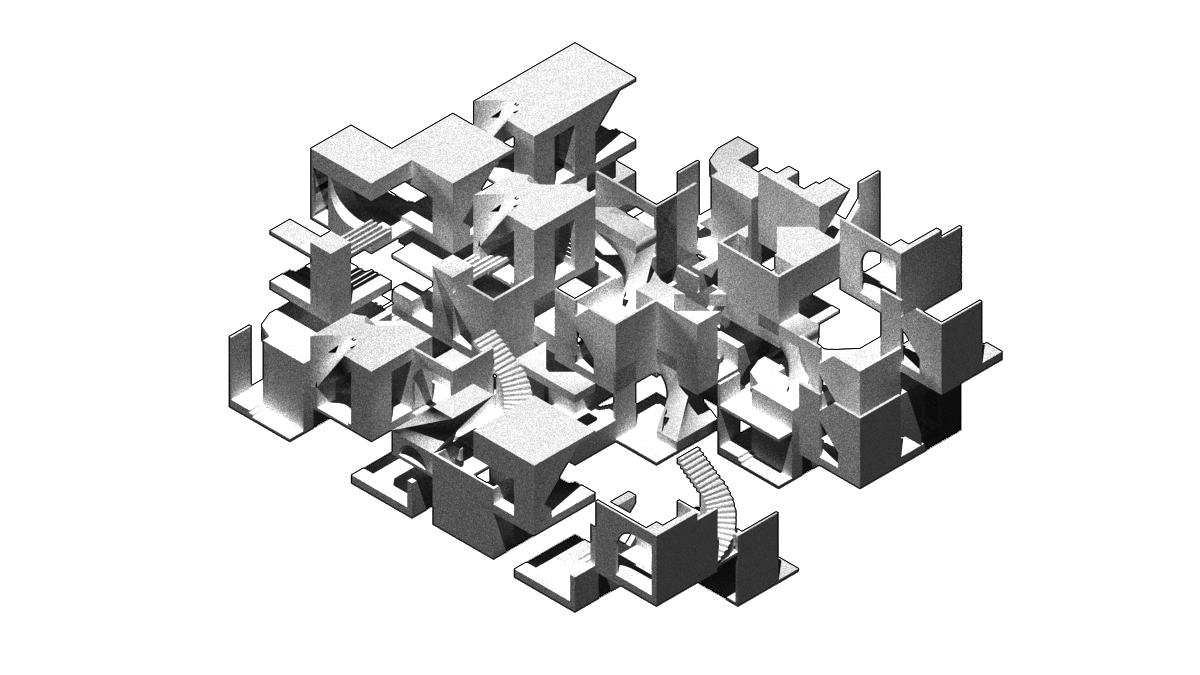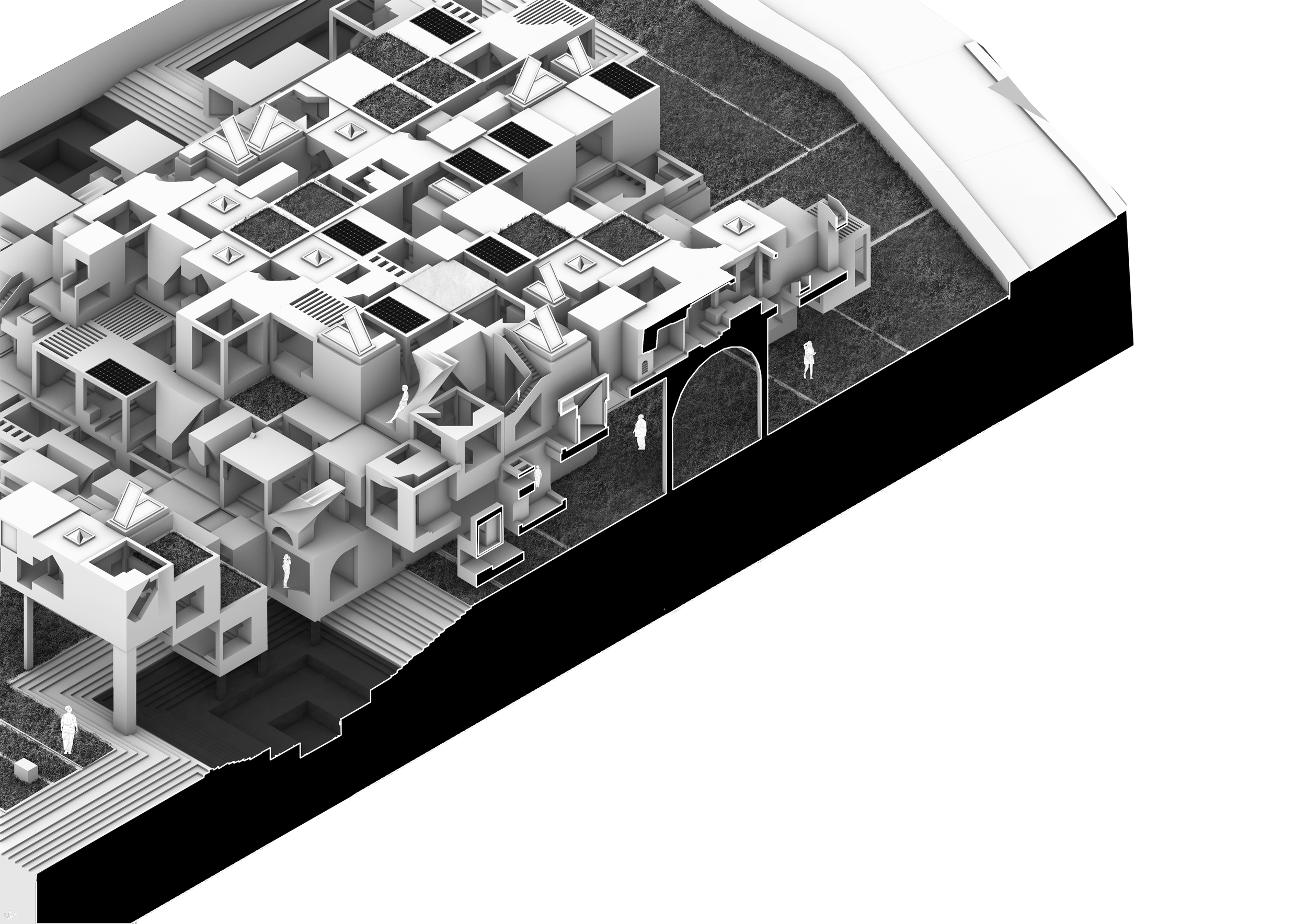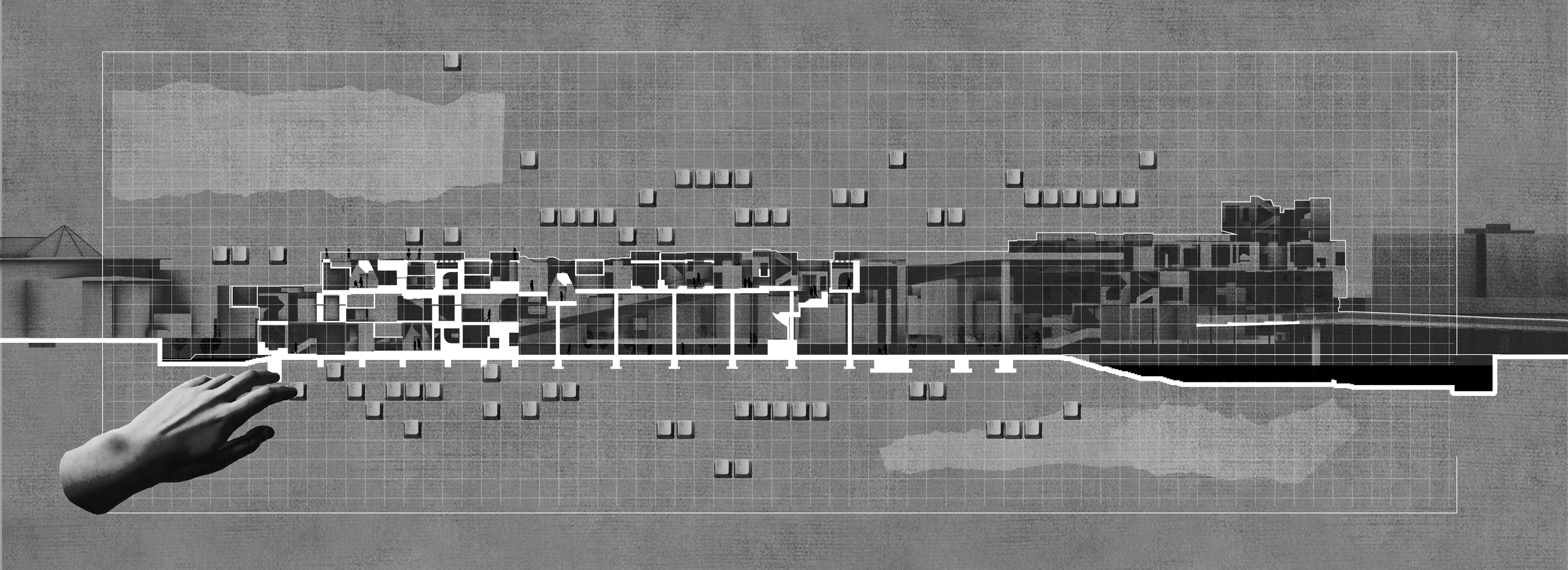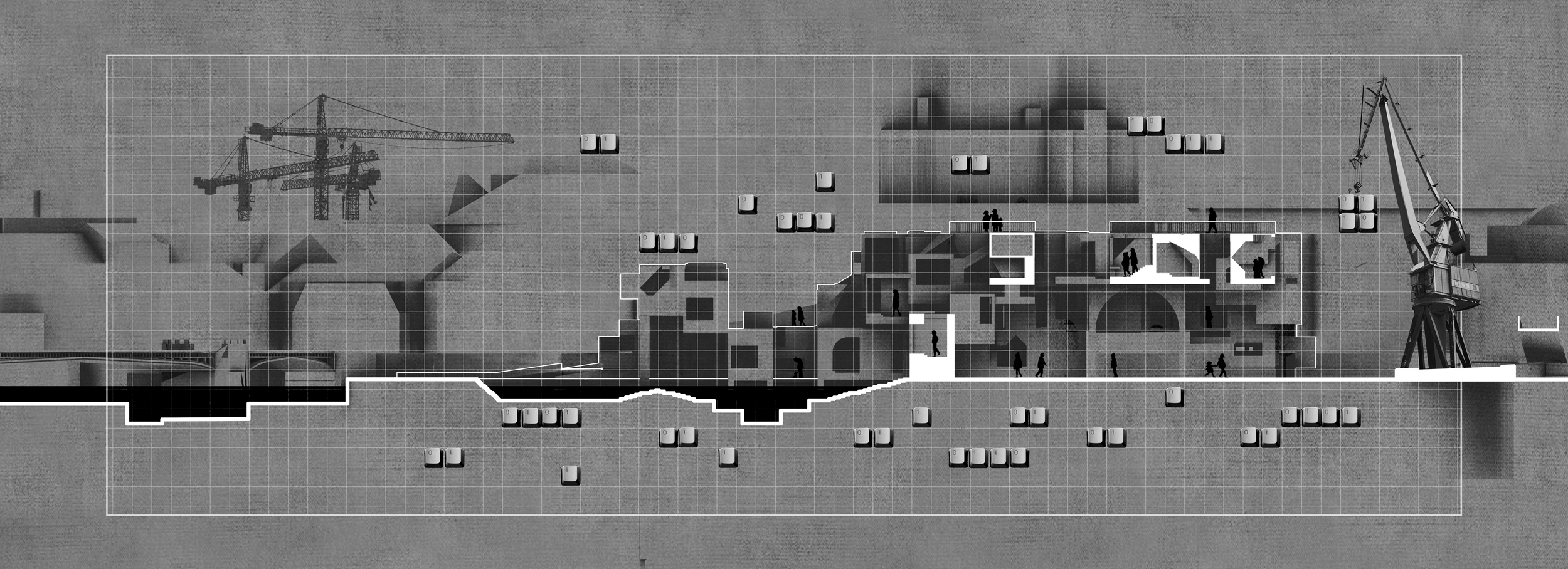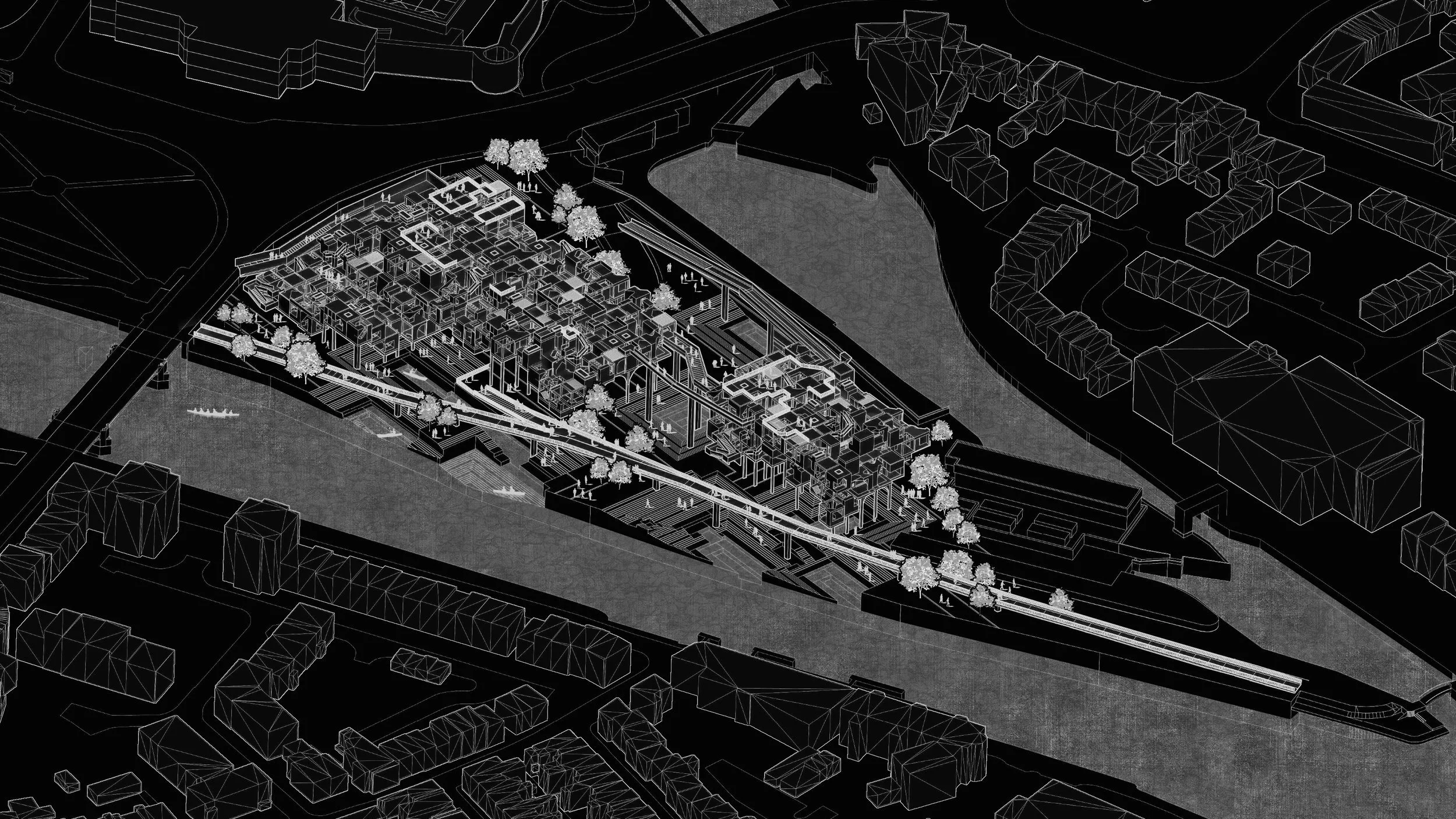Floating Puzzles
Architectural Design Studio II | Sheffield School of Architecture
Instructor: Dr Tim Ireland | Winter 2022
This project explores architectural design through the lens of combinatorics, focusing on St George's Field Car Park in York, England—an area frequently affected by flooding. The project investigates how different combinations can be effectively designed and implemented while addressing the challenges posed by the site's flooding issues. By integrating the water from the River Ouse into the building, the design creates a dynamic interaction between the structure and its environment. Early site visits provided insights into how residents cope with floods, informing the adaptive design of the building’s height and other features. Data collected during these visits was crucial in tailoring the design to local conditions.
Using Grasshopper software, multiple models were generated and tested to explore various structural combinations. The generative logic of Grasshopper allowed for the flexibility to test hundreds of different configurations. This extensive testing process led to the selection of the most suitable design for the final solution. The project showcases the potential of combinatorial methods in architecture, demonstrating how they can be applied to create adaptive and resilient designs in flood-prone areas.
York, England
St George's Field Car Park in York, England, is uniquely situated in an area prone to frequent flooding from the River Ouse. This project explores architectural design through combinatorics, aiming to create adaptable structures that harmonize with the site's natural challenges. By integrating floodwater into the design, the project fosters a dynamic interaction between the building and its environment, showcasing innovative solutions for flood-resilient architecture.
Impounding reservoir system
Online storage
River flow through the storage area and is restricted during high flow.
Offline storage
Water does not normally enter the storage area unless under high flow conditions.
Data:
Based on the flooding information collected, I better understood the extent of the water flow and the annual changes in water levels. Found out that the water levels did not fluctuate much on a single day, so a longer-term view of the data gives a clearer understanding of the impact of the flooding on the base.
Grasshopper methodology
The project began with adding details to the modules of the unit, incorporating various structural adjustments to each one. As the individual units were refined, the overall model structure made sense—a realization that only became apparent after the sixth week. Initially, the need for these improvements was not understood, but it became clear as the project progressed.
Museum
Rowing Club
Rescue Centre
Raft foundations offer a range of advantages, including even distribution of weight, reduced risk of differential settlement, improved stability, lower cost, and suitability for a range of building types. It is also useful in areas with variable soil conditions, where differential settlement can occur. By spreading the weight of the building over a larger area, the raft foundation minimizes the risk of differential settlement.
outcome
In this project, the concept of precarity provided a theoretical foundation for designing with an understanding of the site. While Grasshopper was used to address instability issues like river water, it couldn't incorporate cultural or historical factors, highlighting the risk of losing a natural sense of belonging with digital design.
The advantage of using computers in combinatorics is the ability to quickly test and refine models, increasing the chances of success. However, the process can be random and uncontrollable, unlike manual methods which offer more precise control. Feedback during the project revealed that while digital methods are efficient, they often miss perceptual elements, underscoring the need for a balanced approach.

